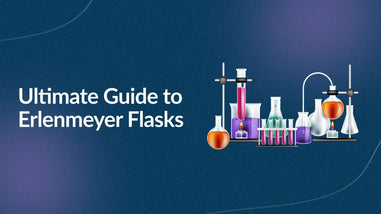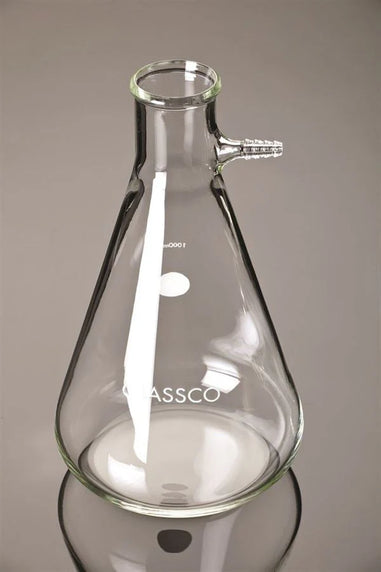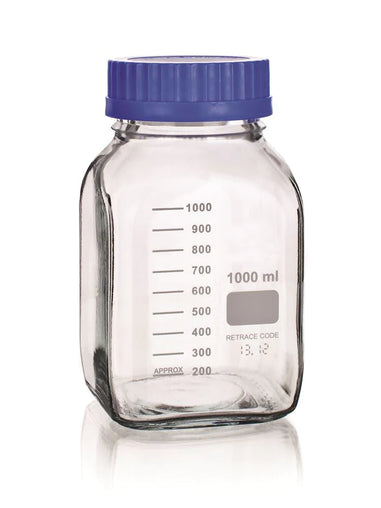- No products in the cart.
What is a laboratory glass tube?
Laboratory glassware involves a diverse range of tools and products that each serve a distinct purpose for experiments and testing. Besides regular beakers and test tubes, laboratory glassware come in an array of tubes in different shapes, sizes, and materials. Understanding the differences between the make, intended purpose, and use for each type of glass tube will help achieve the best results for each process, experiment, or test.
Test tube
Test tubes are the ubiquitous, simple, unmarked glass tubes often found in racks in laboratories and science classrooms. Test tubes are generally built in the same fashion with a curved or flat bottom and lipped upper rim to allow for the tubes to be organized on the rack. Test tubes are used by chemists to house various chemicals for observation and experiments, and come in a wide array of widths and lengths depending on the purpose of the lab work. Test tubes are also used quite often in clinical medicine and biology. Sterile plastic tubes can be used to collect vital samples of blood or other physiological fluids for testing.

Boiling tube
Boiling tubes are thicker, glass alternatives to test tubes and are used for boiling solutions. They are similar structurally to test tubes but with larger, to-scale measurements and longer necks to stop solutions from boiling over. These tubes are used to hold liquids of extremely high temperatures and are usually made out of pyrex glass to withstand the heat.
Centrifuge tube
Centrifuge tubes are the tubes designed specifically for use inside of a laboratory centrifuge. These machines are built to expertly spin and mix solutions at ultra-high speeds. A centrifuge uses a g-force (acceleration unit) to separate liquid particles inside liquid samples. Centrifuges in laboratories can be used to isolate macromolecules like DNA.
The tubes used in centrifuges are slender calibrated glass or plastic tubes made out of strong, precision material that can hold substances safely and withstand high amounts of movement. Centrifuge tubes are inserted into slots inside the centrifuge machine before it is spun.
Samples are put inside the centrifuge tubes and then secured into the machine. A centrifuge has a limited number of tube slots and a cover that must be closed before the machine is started. Due to the nature of centrifuge machines, it is critical to exercise caution when prepping tubes and samples. Laboratory centrifuges need to be handled and balanced with care, and liquid samples and a centrifuge tube of the same weight or balance should always be used. Unevenly weighted tubes can cause imbalances in the machine's rotor when it is operating at high speeds. Discrepancies in the weight distribution of the tubes and samples when it is functioning can cause damage to the products.
NMR Tubes
An NMR tube is a thin and slender glass tube that is specifically used to hold samples in nuclear magnetic resonance spectroscopy. NMR tubes can come in different sizes, 3mm, 5mm, and 10mm are some of the most common. Boron is the most in-demand material for NMR tubes as it has an extremely high chemical durability and can withstand rapid temperature changes. NMR tubes can also be made out of quartz with trace amounts of boron available. Caps known as “J. Young valves” can be used in conjunction with the tubes.
An NMR tube’s main function is to hold liquid samples in perfectly cylindrical volumes. Selecting the correct tube is essential for ensuring experiment results are as accurate as possible. Specifications for choosing the right NMR tube are its camber and concentricity. A tube camber is how straight the barrel of the tube is. Its concentricity refers to the radial centers of the outer and inner walls of the tube. If an NMR tube has poor marks for camber and concentricity, it can negatively affect its accuracy and spectra along with becoming unstable when it is rotated.
Thiele tubes
Thiele tubes are used to determine the melting or boiling points of chemicals. These tubes resemble test tubes but with lower halves fashioned into a triangle. Thiele tubes are heated by bunsen burners that cause a convection current to flow through the triangular handle of the tube. A capillary is placed inside the tube and liquid sample, and then the tube is sealed and heated. When the solution begins to boil, the heating is stopped and the temperature at which the capillary sucks in the solution is the boiling point.
Thistle tubes
A thistle tube is a piece of glassware that is typically used by chemists to add liquid in small, exact volumes. Thistle tubes are designed to only allow certain amounts of liquid through them, and generally have long stems that stop at a reservoir bulb and funnel-like entrance at the very top. Thistle tubes are designed to fit on other flasks and stoppers so that other materials can be added to new mixtures.
For over 40 years, Lab Pro Inc. has been committed to delivering the highest quality lab glassware such as test tubes, lab supplies, chemicals, and cleanroom PPE apparel to medical device and electronic manufacturing laboratories worldwide. To learn more, visit the biggest Lab Supply showroom in California, or contact us online or at 888-452-2776.












































